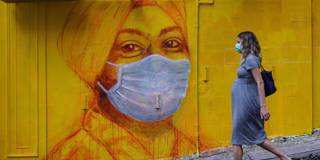Gender is often an ignored factor during health emergencies, even though women comprise 70% of the global healthcare workforce. During the COVID-19 pandemic, the most effective policy responses will be those that account for how the crisis is experienced by women and girls.
NEW YORK – When pandemics strike, world leaders and health responders must adapt quickly to the looming threat. Often the last factor they consider – if it makes their to-do lists at all – is gender.
As advocates for the health and rights of girls and women, we’ve heard the excuses time and time again: “Gender isn’t a priority right now,” leaders say. “Maybe when things calm down,” they claim. “It’s not the right time,” they insist. If we are to pursue the most effective responses to COVID-19 – or any health emergency – this must change.
Girls and women experience outbreaks differently than boys and men. A gender lens highlights the specific risks and vulnerabilities girls and women face because of deep-rooted inequalities and traditional gender roles. And the facts such a perspective uncovers can save lives and ensure that nobody is left behind in our emergency responses.

NEW YORK – When pandemics strike, world leaders and health responders must adapt quickly to the looming threat. Often the last factor they consider – if it makes their to-do lists at all – is gender.
As advocates for the health and rights of girls and women, we’ve heard the excuses time and time again: “Gender isn’t a priority right now,” leaders say. “Maybe when things calm down,” they claim. “It’s not the right time,” they insist. If we are to pursue the most effective responses to COVID-19 – or any health emergency – this must change.
Girls and women experience outbreaks differently than boys and men. A gender lens highlights the specific risks and vulnerabilities girls and women face because of deep-rooted inequalities and traditional gender roles. And the facts such a perspective uncovers can save lives and ensure that nobody is left behind in our emergency responses.